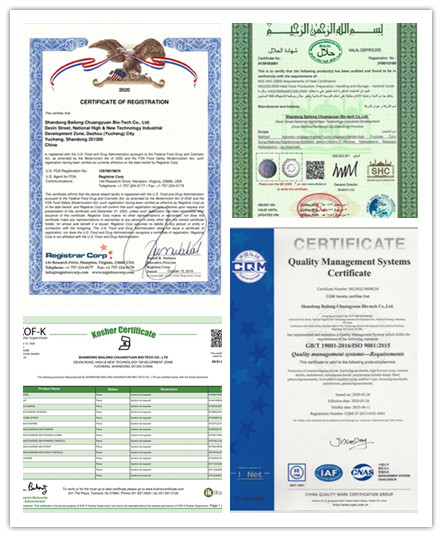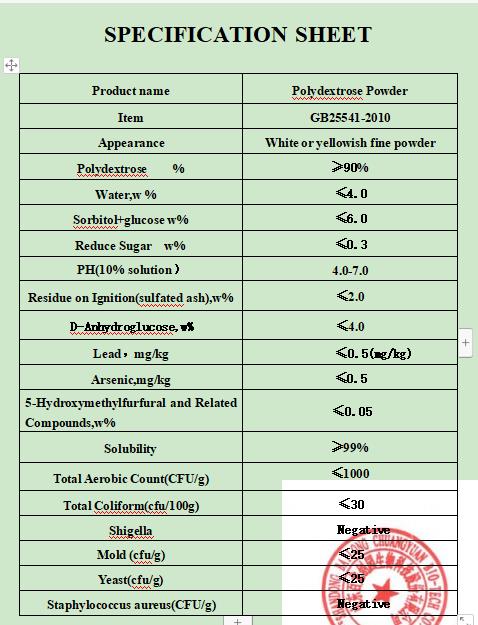Health products: direct taken directly such as tablets, capsules, oral liquids, granules, dose 5~15 g/day; as the addition of dietary fiber ingredients in health products: 0.5%~50%
Products: bread, bread, pastries, biscuits, noodles, instant noodles, and so on. Added: 0.5%~10%
Meats: ham, sausage, luncheon meats, sandwiches, meat, stuffing, etc. Added: 2.5%~20%
Dairy products: milk, soy milk, yogurt, milk, etc. Added: 0.5%~5%
Beverages: fruit juice, carbonated drinks. Added: 0.5%~3%
Wine: added to the liquor, wine, beer, cider, and wine, to produce high-fiber health wine. Added: 0.5%~10%
Condiments: sweet chili sauce, jam, soy sauce, vinegar, hot pot, noodles soup, and so on. Added: 5%~15%
Frozen foods: ice cream, popsicles, ice cream, etc. Added: 0.5%~5%
Snack food: pudding, jelly, etc; amount: 8%~9%



HEALTH BENEFITS
Polydextrose has been tested by a number of independent researchers to validate its effectiveness and
to demonstrate its physiological health benefits. The following are some highlights on the health benefits of polydextrose:
• Is well-tolerated, even up to 90 g/day or 50 g as a single dose

• Supports healthy blood glucose levels by eliciting a lower blood glucose response
• May help promote regularity, as a result of its faecal bulking effect
• May support the growth of beneficial gut bacteria
• May support a healthy gut by producing short-chain fatty acids (SCFAs), which feed the beneficial bacteria in the colon
• Is ideal for reduced-calorie foods and may assist with weight management by providing negligible calories (1 kcal/g
and a satiety benefit, as suggested by emerging data
